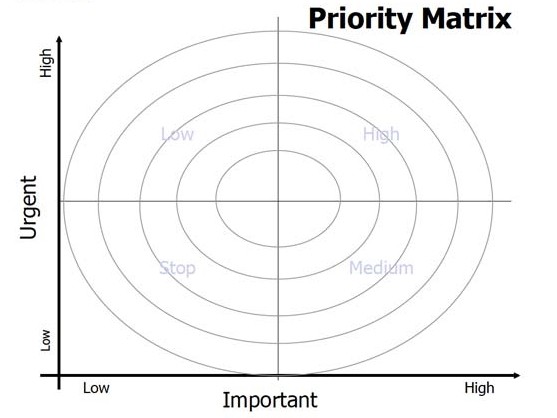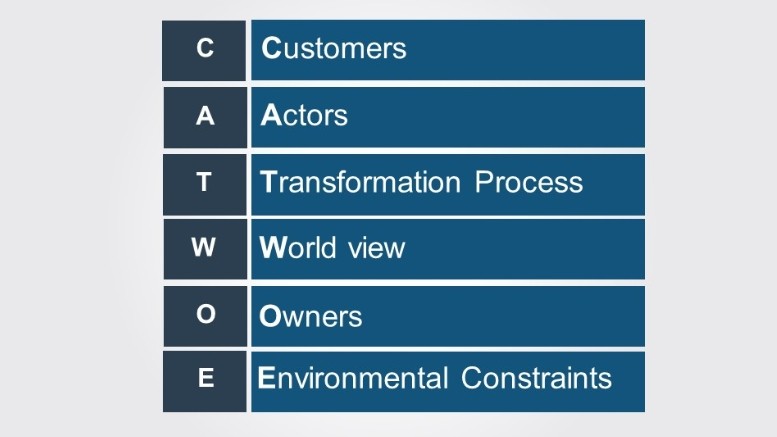Problem Solving: how to effectively solve problems in a team?
Any action to solve a problem on the part of the manager is, first of all, identifying the problem and its causes, setting priorities and choosing alternatives for the best solution, as well as directly implementing this solution.
The ability to solve internal and external problems of the product and the team in a timely manner and make responsible decisions is what any novice product manager should learn at the start of his career. In this material, we will “decompose” the process of solving, as well as analyze several effective techniques and exercises for teamwork.

Competent problem solving motivates team members to achieve far greater results than they can imagine.
')
By developing problem solving skills, even an inexperienced product manager at the start of a career can improve team collaboration and the ability to deal with difficult situations. Teamwork will encourage team members to use different thinking styles and make decisions all together.
In any case, teamwork aimed at solving business problems is not an activity for the sake of a tick, and you should take it seriously. It doesn't matter if you use a simple exercise, a fun game, or a scientific method. The main thing is that any problem solving activity should benefit and eliminate obvious and hidden barriers.
Any way to solve a problem is designed to set the team’s thinking in the right direction. But each team needs its own methods. Studying new techniques and approaches, we expand the review to the problem and increase personal and team effectiveness.
Regardless of the size and nature of the problem, a systematic approach to solving it will help you become a more effective product manager.
In the systems approach to solving problems, there are 5 main stages:
Correctly defining a problem is the right step towards solving it. This is a very important stage on which it will depend on how you try to solve it.
For example, you received a critical comment from one of your users / clients. Solutions to the question will be different depending on how you define this problem.
If you decide that it is a matter of the low productivity of a particular team member, you will develop various solutions aimed at optimizing his / her work.
Once the problem has been identified, it’s worth digging deeper and finding out what caused it. Ishikawa diagram or fishbone diagram is often used to determine cause-effect relationships.
If you view a problem as a gap between where you are now and where you want to be, then causes and problems are obstacles that prevent you from immediately covering this distance.

Such an analysis is quite effective, because it helps to ensure that your solutions are aimed at eliminating the actual causes, and not the symptoms of the problem. If the solution found only eliminates the symptoms instead of the actual cause, then the problem is likely to recur.
As soon as the hard work of defining the problem and clarifying its causes is complete, the time has come to show creativity and begin to “gush” with ideas. Team meetings and brainstorming are perfect for this.
After your list of ideas that can solve a problem is long enough, you need to choose a single solution method.
At this stage, one cannot do without the ability to work with priorities that is so important for any product manager. A simple matrix used in the Lean Prioritization method will help to quickly and clearly put everything in its place. The best outcome for your problem will be to solve the highest level on the matrix. Such a matrix can be depicted independently on a sheet of paper:

Or use the help of available services to manage products that offer features and tools for prioritization. Such, for example, as Hygger, MindTools or ProdPad.
When the perfect solution is found, it's time to take action. If the decision includes several actions or requires additional ones from other team members, it is recommended to create an action plan and treat it as a mini-project.
Using this simple five-step approach will certainly increase the effectiveness of your problem solving skills.
Such an approach (with varying degrees of change) was taken as the basis for many techniques that help solve team problems. Let's stop on some of them.
Methods for analyzing the causes and identifying solutions to problems
Root Cause Analysis or RCA is an action aimed at finding the key cause of a problem, analyzing it and creating a plan to solve it.
It is often difficult in reality to distinguish symptoms from a cause. The RCA model is aimed at identifying the origin of the problem and consists of a specific set of steps:
The problem will most often include the following factors:
For the analysis of all faces of the negative impact of RCA should pay attention to all three factors.
The principle of RCA is very similar to other methods and consists of 5 consecutive steps:
It is important to be able to figure out what effect a decision can have.
The CATWOE method, as you understand, has nothing to do with cats (from English cat). The abbreviation and method itself is useful in gathering information about a problem.
The main principle of technology is the decomposition of the problem into different zones of influence. Each initial letter in the abbreviation defines the zones of influence: people, environments and processes.
All these six elements open up new perspectives and help to delve into the study of the problem. The CATWOE method provides more comprehensive problem data and helps determine the severity of the problem before actively involving other team members in the solution.

This model is one of the simplest and most frequently used methods for determining the causes of a problem. Apply it quickly and easily, it is used for simple and moderately complex problems.
5 Why uses a 6-step stream:
Here it is important to quickly move from the answer to the next question, which will allow you to determine the overall picture before consciousness makes a judgment about the problem.
If known methods and techniques require study, then the simplest exercises and games for team problem solving can be applied without much preparation and without taking much time.
Business team games are a more informal way to solve problems. Most often, such activities are aimed at the development of team communication, mutual assistance, delegation, adaptation, and other useful skills for the team.

Such activities are not suitable for every team, as they require a sufficient level of susceptibility from team members, flexible thinking and a creative approach.
The manager who organizes such activities is important to understand that in their case there can be no winners or losers. Here are 5 examples of such activities:
Activity develops teamwork skills and collective decision making.
For the game you will need: a dozen eggs (more or less depending on the size of the team) and any materials at hand (paper, newspapers, tape, boxes, pencils, straws for cocktails, food film, tapes, balloons, plastic utensils, etc. .), as well as a place for activity, where you can temporarily litter.
Participants can be divided into several teams. Each receives an egg and selects "building materials". Everyone will have 15-20 minutes to build a protective casket for eggs, which will not allow it to break. After that, participants dump their “caskets” from a predetermined height (table, floor of a building, staircase). A container with an egg will not break in a strong and cohesive team. If several eggs survive - you can increase the height for the experiment, until the best team is determined.
Activity develops the ability to adapt to the team. For the game you will need a rope or tape.
Mark a limited area on the floor with a rope or scotch tape. The team must fit in the designated area. Now gradually reduce the limited space for some time. Participants must find a way to keep each other inside and not fall overboard the “ship”. Usually the activity lasts up to 10 minutes.
Develops teamwork skills. All that is needed is a key, a locked room and 5-10 hints-tasks.
Once in the locked room, the team needs to find the key with the help of hints. Getting out of a locked room is necessary in the allotted time. Usually for such activity is enough 30-45 minutes. To successfully complete the game, the team needs to be able to act together and make a common decision.
The game develops communication skills. It requires an empty room or a corridor, blindfolds and a set of ordinary office supplies.
Scatter the accessories on the floor in a random order so that they constitute an obstacle to the passage from one end of the room to the other.
Divide the participants in pairs, blindfold one of the partners. The second partner should direct and lead the partner from one end to the other so as not to touch any object on the “minefield”. You can only direct with words. If you run several pairs on the field at the same time, the task becomes more complicated.
Activity is also useful for developing communication skills. For the conduct will need a rope and blindfolds.
Activity participants must wear eye patch and stand in a circle. The rope is tied together and stacked in front of the participants also in the form of a circle. The host of the game names the geometric figure that participants must draw with the help of a rope. Players can talk, but you can not remove the bandages. Wins the team that quickly build the necessary figure.

No product has yet escaped minor or major problems in its life cycle. Problems are normal. The main thing is to pay attention to them and take the right measures. For this, there are a variety of methods of solving or team exercises. Practice shows that they have repeatedly rescued the team and helped to find a successful solution.
What methods, exercises, team games and other practices do you use to overcome obstacles in the life of your team, product, company?
The ability to solve internal and external problems of the product and the team in a timely manner and make responsible decisions is what any novice product manager should learn at the start of his career. In this material, we will “decompose” the process of solving, as well as analyze several effective techniques and exercises for teamwork.

Competent problem solving motivates team members to achieve far greater results than they can imagine.
')
By developing problem solving skills, even an inexperienced product manager at the start of a career can improve team collaboration and the ability to deal with difficult situations. Teamwork will encourage team members to use different thinking styles and make decisions all together.
In any case, teamwork aimed at solving business problems is not an activity for the sake of a tick, and you should take it seriously. It doesn't matter if you use a simple exercise, a fun game, or a scientific method. The main thing is that any problem solving activity should benefit and eliminate obvious and hidden barriers.
Any way to solve a problem is designed to set the team’s thinking in the right direction. But each team needs its own methods. Studying new techniques and approaches, we expand the review to the problem and increase personal and team effectiveness.
Regardless of the size and nature of the problem, a systematic approach to solving it will help you become a more effective product manager.
In the systems approach to solving problems, there are 5 main stages:
- Problem definition
- Identification of its causes
- Generation of ideas
- Choosing the best solution
- Act
Identify the problem
Correctly defining a problem is the right step towards solving it. This is a very important stage on which it will depend on how you try to solve it.
For example, you received a critical comment from one of your users / clients. Solutions to the question will be different depending on how you define this problem.
If you decide that it is a matter of the low productivity of a particular team member, you will develop various solutions aimed at optimizing his / her work.
Find out the reasons
Once the problem has been identified, it’s worth digging deeper and finding out what caused it. Ishikawa diagram or fishbone diagram is often used to determine cause-effect relationships.
If you view a problem as a gap between where you are now and where you want to be, then causes and problems are obstacles that prevent you from immediately covering this distance.

Such an analysis is quite effective, because it helps to ensure that your solutions are aimed at eliminating the actual causes, and not the symptoms of the problem. If the solution found only eliminates the symptoms instead of the actual cause, then the problem is likely to recur.
Generate ideas
As soon as the hard work of defining the problem and clarifying its causes is complete, the time has come to show creativity and begin to “gush” with ideas. Team meetings and brainstorming are perfect for this.
Choose the best solution
After your list of ideas that can solve a problem is long enough, you need to choose a single solution method.
At this stage, one cannot do without the ability to work with priorities that is so important for any product manager. A simple matrix used in the Lean Prioritization method will help to quickly and clearly put everything in its place. The best outcome for your problem will be to solve the highest level on the matrix. Such a matrix can be depicted independently on a sheet of paper:

Or use the help of available services to manage products that offer features and tools for prioritization. Such, for example, as Hygger, MindTools or ProdPad.
Act
When the perfect solution is found, it's time to take action. If the decision includes several actions or requires additional ones from other team members, it is recommended to create an action plan and treat it as a mini-project.
Using this simple five-step approach will certainly increase the effectiveness of your problem solving skills.
Such an approach (with varying degrees of change) was taken as the basis for many techniques that help solve team problems. Let's stop on some of them.
Methods for analyzing the causes and identifying solutions to problems
Root Cause Analysis
Root Cause Analysis or RCA is an action aimed at finding the key cause of a problem, analyzing it and creating a plan to solve it.
It is often difficult in reality to distinguish symptoms from a cause. The RCA model is aimed at identifying the origin of the problem and consists of a specific set of steps:
- Determining what happened
- Identify the causes of the incident
- Identifying steps to ensure that this does not happen again.
The problem will most often include the following factors:
- The physical factor - the problem is material and tangible.
- The human factor associated with the error of a certain person.
- An organizational factor is when a process or system used to make decisions and complete tasks is out of order.
For the analysis of all faces of the negative impact of RCA should pay attention to all three factors.
The principle of RCA is very similar to other methods and consists of 5 consecutive steps:
- Identify the problem
- Collect the necessary information
- Identify possible causal factors
- Reveal Root Causes
- Propose and implement a solution
It is important to be able to figure out what effect a decision can have.
CATWOE
The CATWOE method, as you understand, has nothing to do with cats (from English cat). The abbreviation and method itself is useful in gathering information about a problem.
The main principle of technology is the decomposition of the problem into different zones of influence. Each initial letter in the abbreviation defines the zones of influence: people, environments and processes.
- Customers - who are they and what, how does the problem affect them?
- Actors - who is involved in the problem? Who should be involved to solve the problem?
- Transformation process - what processes are affected by this problem?
- World view - what's the big picture? Are global consequences foreseen?
- Owner - who owns the process / situation and what role will it play in the decision?
- Environmental constraints - are there any limitations that may affect the final result?
All these six elements open up new perspectives and help to delve into the study of the problem. The CATWOE method provides more comprehensive problem data and helps determine the severity of the problem before actively involving other team members in the solution.

Technique 5 Why
This model is one of the simplest and most frequently used methods for determining the causes of a problem. Apply it quickly and easily, it is used for simple and moderately complex problems.
5 Why uses a 6-step stream:
- Team gathering. The discussion should bring together those who are directly related to the problem.
- Problem definition, if not defined. All team members must agree on the definition.
- The main "Why?". Ask the question why the problem arose. When answering, use only facts without speculation.
- The rest are “Why?”. To the answer received, ask again the question "Why?". Continue until the main problem is found. Such questions may not be five, but more or less.
- Action plan. When the team has identified the root cause, it's time to discuss the list of measures and actions to avoid repeating the problem in the future.
- Analysis. Analysis is also very important for non-repetition of problems in the future. Discuss how effective the measures taken were, whether they helped get rid of the problem or reduce its impact. If the goal has not been achieved, it is necessary to repeat the process.
Here it is important to quickly move from the answer to the next question, which will allow you to determine the overall picture before consciousness makes a judgment about the problem.
If known methods and techniques require study, then the simplest exercises and games for team problem solving can be applied without much preparation and without taking much time.
Business games to solve problems
Business team games are a more informal way to solve problems. Most often, such activities are aimed at the development of team communication, mutual assistance, delegation, adaptation, and other useful skills for the team.

Such activities are not suitable for every team, as they require a sufficient level of susceptibility from team members, flexible thinking and a creative approach.
The manager who organizes such activities is important to understand that in their case there can be no winners or losers. Here are 5 examples of such activities:
Egg Drop
Activity develops teamwork skills and collective decision making.
For the game you will need: a dozen eggs (more or less depending on the size of the team) and any materials at hand (paper, newspapers, tape, boxes, pencils, straws for cocktails, food film, tapes, balloons, plastic utensils, etc. .), as well as a place for activity, where you can temporarily litter.
Participants can be divided into several teams. Each receives an egg and selects "building materials". Everyone will have 15-20 minutes to build a protective casket for eggs, which will not allow it to break. After that, participants dump their “caskets” from a predetermined height (table, floor of a building, staircase). A container with an egg will not break in a strong and cohesive team. If several eggs survive - you can increase the height for the experiment, until the best team is determined.
Sinking ship
Activity develops the ability to adapt to the team. For the game you will need a rope or tape.
Mark a limited area on the floor with a rope or scotch tape. The team must fit in the designated area. Now gradually reduce the limited space for some time. Participants must find a way to keep each other inside and not fall overboard the “ship”. Usually the activity lasts up to 10 minutes.
Quest
Develops teamwork skills. All that is needed is a key, a locked room and 5-10 hints-tasks.
Once in the locked room, the team needs to find the key with the help of hints. Getting out of a locked room is necessary in the allotted time. Usually for such activity is enough 30-45 minutes. To successfully complete the game, the team needs to be able to act together and make a common decision.
Minefield
The game develops communication skills. It requires an empty room or a corridor, blindfolds and a set of ordinary office supplies.
Scatter the accessories on the floor in a random order so that they constitute an obstacle to the passage from one end of the room to the other.
Divide the participants in pairs, blindfold one of the partners. The second partner should direct and lead the partner from one end to the other so as not to touch any object on the “minefield”. You can only direct with words. If you run several pairs on the field at the same time, the task becomes more complicated.
"Blind" figure
Activity is also useful for developing communication skills. For the conduct will need a rope and blindfolds.
Activity participants must wear eye patch and stand in a circle. The rope is tied together and stacked in front of the participants also in the form of a circle. The host of the game names the geometric figure that participants must draw with the help of a rope. Players can talk, but you can not remove the bandages. Wins the team that quickly build the necessary figure.

Conclusion
No product has yet escaped minor or major problems in its life cycle. Problems are normal. The main thing is to pay attention to them and take the right measures. For this, there are a variety of methods of solving or team exercises. Practice shows that they have repeatedly rescued the team and helped to find a successful solution.
What methods, exercises, team games and other practices do you use to overcome obstacles in the life of your team, product, company?
Source: https://habr.com/ru/post/418747/
All Articles